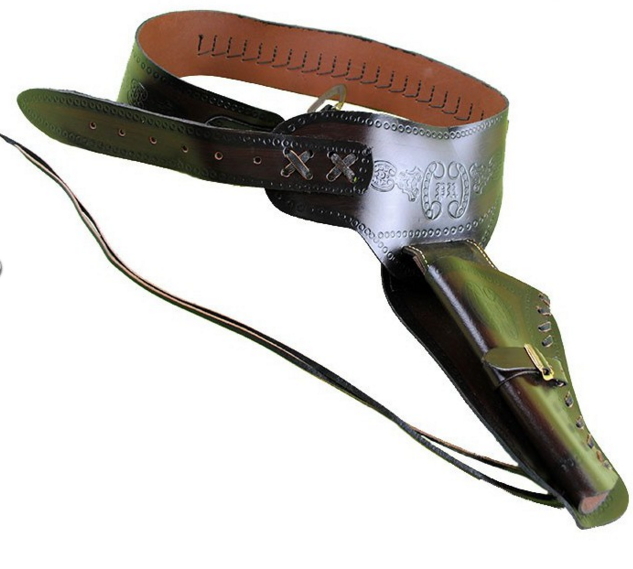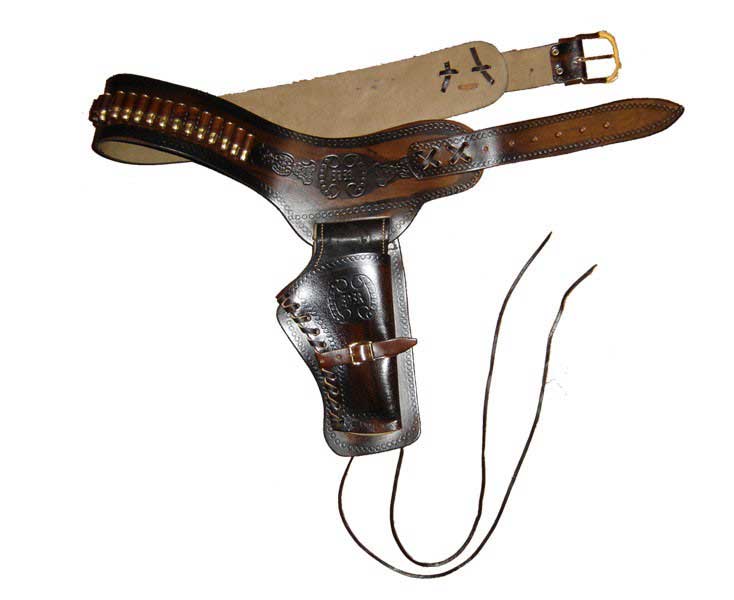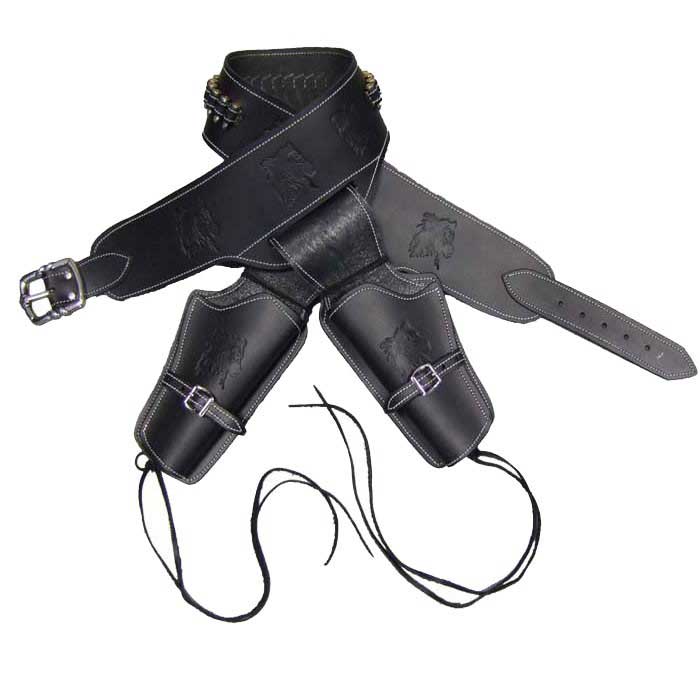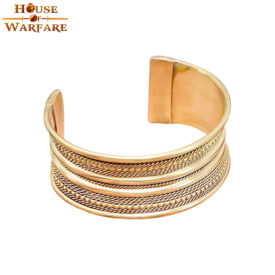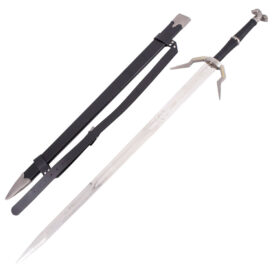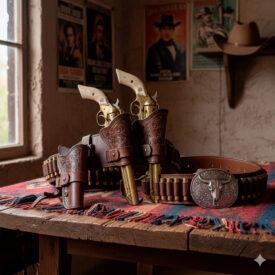The canana is much more than just an accessory; it is an item with a rich history and a usefulness that endures to this day. In this article, we will break down its meaning, explore its fascinating past, and guide you on the exciting adventure of creating your own handcrafted canana, as well as how to properly care for it.
—
What Exactly Is a Canana?
At its core, a canana (also known as a cartridge belt or bandolier) is a belt specifically designed to carry cartridges or bullets, making it easier to quickly reload a firearm. Although some people confuse it with a supply backpack or a “canteen,” its purpose is different and very clear: to organize and carry ammunition.
A canana is what we usually know as a belt, but in this special case, it is for carrying cartridges or bullets.
—
A Historical Overview of the Canana
The exact origin of the word “canana” is somewhat uncertain, with possible roots in Latin (“canna” for reed or tube) or Arabic (“quenana” for quiver). What we do know is that its use dates back to ancient times, with a possible precedent in the belts of the arquebusiers of the Tercios of Flanders, which were popularly known as “the twelve apostles” for the twelve powder charges they carried.
According to history, the canana appears to be of European origin, although it later became more popular in Mexico and the American Old West. As for the shape of cananas, there are some characteristics such as those used in Mexico, crossed over the chest plus another as a belt, or the typical ones from the American West, only with a belt and one or two revolvers.
Although its origin is European, the canana found in Mexico the country that gave it the greatest diffusion and turned it into a true emblem. Who doesn’t have in mind the iconic image of Mexican revolutionaries like Emiliano Zapata, or the brave “adelitas,” with their cananas crossed over their chests? This way of wearing them, along with the traditional one at the waist, became very popular in Mexico and other Latin American countries.
Over time, the materials used to make cananas have evolved. Initially, at the beginning of the 19th century, they were made of leather, a durable and resistant material. Later, canvas gained ground, and nowadays, it is common to find them made from various synthetic fabrics that provide greater elasticity and versatility. Already in the 19th century, leather was the most common material for their manufacture, later they were made in canvas, and today you can find a bit of everything.
—
The Canana Today: An Essential Accessory for Hunters
Today, the canana remains a very useful and appreciated accessory, especially in the field of hunting. Its practical design allows you to keep ammunition organized and within reach, making it a fundamental piece of equipment. The ability to carry ammunition safely, accessibly, and well-distributed is crucial for any hunter, whether for a day of small or big game hunting. The modern canana often incorporates additional features, such as compartments for other small tools or improved fastening systems, adapting to the needs of the contemporary hunter.
In addition to its functionality, the canana also evokes a sense of tradition and authenticity in the hunting world. It is a link to the past, to the hunters and explorers who used it before us. Its durability and the nobility of materials like leather make it a long-term investment for those who value quality accessories.
—
Dare to Make Your Own: Guide to Crafting a Handcrafted Canana
If you are someone who values authenticity and customization, the idea of making your own handcrafted canana is a rewarding adventure. Michel Coya, a reference in the field, points out that, with patience and method, it is possible to make high-quality pieces, designed to your taste and needs, and at a reduced cost. However, this is a task that requires perseverance, where mistakes are hard to fix, so haste is not a good companion.
Essential Materials and Tools:
To embark on this project, you will need:
- Leather: of different thicknesses; thicker for the base (the belt) and thinner for the cartridge holders.
- Threads: preferably waxed, which offer greater resistance and durability to the seams.
- Needles: specific for sewing leather, more robust and sharp to penetrate this material.
- Tools for marking and punching: awl, hole punch of different sizes, fine drill with small bits, and a stitching wheel to guide the seams.
- Cutting tools: a sharp knife or cutter, and a metal ruler for precise cuts.
- Accessories: a buckle suitable for the design, rivets for reinforcement, and a ring if you want to add a hanging element.
- For a perfect finish: an edge creaser for marking lines and a burnisher for smoothing and polishing the edges.
- For the pattern: sturdy cardboard, pencil, square to ensure right angles, and carbon paper to transfer the design to the leather.
The Pattern: The Foundation of a Flawless Canana:
Meticulousness in creating the pattern is crucial, as the final result of your canana will depend on it.
- Measure and Draw the Base: First, measure the length of the canana body (from the tip of the belt to the fold for the buckle) and draw two parallel lines on the cardboard. Be sure to consider the desired width for your canana.
- Define the Ends: Draw the ends of both the belt and the transitions from the body to the strap. These details are important for the aesthetics and durability of the canana.
- Cut the Pattern: Cut the cardboard precisely. This will be your template, so each cut must be exact.
- Mark and Cut the Base Leather: With the help of an awl and a ruler, carefully mark the outline of the base piece on the leather. Then, cut it with a knife or cutter on a flat, protective surface, such as a wooden board, making sure not to go outside the lines. Precision in this step is fundamental.
Making the Cartridge Holders:
This is the part where your canana will take on its functional shape, creating the perfect spaces for each cartridge.
- Draw the Folds: Use a real cartridge as a guide to draw the pattern for the folds. Mark it on two pieces of leather: a thicker one for the bottom that will form the base of the holder, and a thinner one for the upper fold that will wrap it.
- Punch and Test Stitch: Mark the holes for stitching (with awls, hole punches, or a fine drill) and do a test stitch on a leather scrap. This will allow you to ensure the resulting space is perfect for a cartridge and adjust the pattern if necessary. This step is crucial to avoid mistakes in the final piece.
- Mark and Stitch on the Base: Once satisfied with the size, mark on the base piece the sides of each fold and the stitches with the stitching wheel, aiming for perfect symmetry. This uniformity is key for a professional finish.
- Join the Pieces: Sew the two pieces of leather (the base of the canana and the fold of the holder) with two needles, keeping a consistent order for flawless stitching. Finally, sew the flap that will cover the excess of the holders, wrapping the body of the canana from behind. This not only gives a clean finish but also reinforces the structure.
Attaching the Buckle and Final Details:
The final touches are what truly define the functionality and aesthetics of your handcrafted canana.
- The Buckle: Prepare a small rectangle of leather the width of the buckle prong, present it and mark where it will be sewn. Take this opportunity to add a loop that will keep the strap attached to the body of the canana, preventing it from hanging uncomfortably.
- Stamping and Molding: Moisten the canana in lukewarm water. It is important that the leather is damp but not soaked. Then, insert all the cartridges into their respective holders. With your fingers, shape each holder, gently rounding them so the cartridges fit perfectly and maintain their shape. Then, hang it in a shaded, ventilated place to dry naturally. Once dry, remove the cartridges and you will see how the holders keep their final, professional shape.
- Final Touches: You can add a small ring, sewn with a leather scrap and a rivet, which will serve to attach a game carrier or any other useful accessory for hunting. If there was any discoloration during the process, such as from the brass of the cartridges, it can be fixed by dyeing the edges black and going over the rest of the canana in a dark brown to even out the color. For a personal and distinctive touch, you can sign your creation with your logo using a stamp and pressure, leaving your mark on this unique handcrafted piece.
—
Caring for and Maintaining the Leather in Your Handcrafted Canana:
Since leather is a main material in the handcrafted canana, it is essential to know how to care for it so it lasts for many years and maintains its beauty and functionality.
- Regular Cleaning: Remove dust and surface dirt with a soft, dry cloth after each use. For deeper cleaning, dampen a cloth with lukewarm water and wipe gently, avoiding soaking the leather. For stubborn stains or dirt, there are specific leather cleaners that should be applied strictly following the manufacturer’s instructions. Avoid abrasive or harsh chemical products that could damage the material.
- Conditioning: Leather, being a skin, can dry out and crack over time, especially if exposed to extreme conditions. To keep it flexible, soft, and nourished, apply a high-quality leather conditioner every 3-6 months, depending on use and environmental conditions. Some natural oils, such as linseed oil or neatsfoot oil, are also useful for conditioning and protecting leather, but use them sparingly to avoid saturating the leather.
- Protection: Avoid direct and prolonged exposure to sunlight, as UV rays can discolor and dry out the leather, causing premature deterioration. It is also advisable to apply a leather protector to create an invisible barrier against stains, moisture, and water. Always follow the product instructions for effective application.
- Proper Storage: Store your canana in a cool, dry place, away from direct sunlight and sources of heat or excessive humidity. This prevents mold and cracking. If possible, use breathable fabric covers to protect it from dust and friction with other objects. If it is a bulkier leather item, such as a heavy cross-body canana, it is preferable to store it horizontally or hang it on a wide hanger to prevent stretching or deformation over time.
- Repairing Minor Damage: For superficial scratches, gently rub with a damp cloth and then apply a conditioner. If the scratches are deeper, a specific conditioner or a leather repair kit can help conceal them. Act quickly on stains with a specific leather cleaner, following the instructions. For more severe damage, such as significant cracks, tears, or extensive deterioration, it is advisable to seek help from a leather specialist or craftsman who can professionally restore the piece.
—
Cananas for Every Style and Need:
Cananas have transcended their purely functional origin to also become a distinctive style element. From historical replicas perfect for reenactments or collecting, to modern versions adapted for sport hunting or even urban fashion. The diversity in materials, designs, and storage capacities makes them suitable for a wide range of users.
- For the traditional hunter: A sturdy leather canana, with capacity for the most common calibers and a classic design, is the ideal choice. They offer durability and a touch of authenticity.
- For the sport shooter: Cananas made of synthetic materials, lighter and with ergonomic fastening systems, allow for faster and more comfortable reloading in competitions.
- For the history enthusiast or collector: Historical replicas of cananas, especially those evoking the Old West or used in historical conflicts, are valuable pieces and a perfect complement for replica pistols and revolvers.
- For the occasional adventurer: A more versatile canana, perhaps with modular attachment options or lower capacity, can be useful for safely carrying ammunition on excursions or outdoor activities.
The choice of your canana will depend on your main activity, the type of weapon you use, and your personal preferences in terms of comfort and aesthetics. It is important to consider the caliber of ammunition you will be carrying to ensure a perfect fit in the canana’s holders.
The canana is a testament to history and functionality, an accessory that has accompanied warriors and hunters throughout the centuries. Whether you admire its historical legacy or decide to embark on the fascinating path of making your own, the canana is an element that combines tradition, utility, and a touch of personal craftsmanship. By taking proper care of it, you will ensure that this timeless piece accompanies you on many adventures.
Now that we have explored the canana from its history to its handcrafted making and maintenance, we invite you to discover a wide selection of cananas that suit your needs.
If you are looking for a piece with character, functionality, and one that pays homage to tradition, don’t hesitate to visit our collection.

